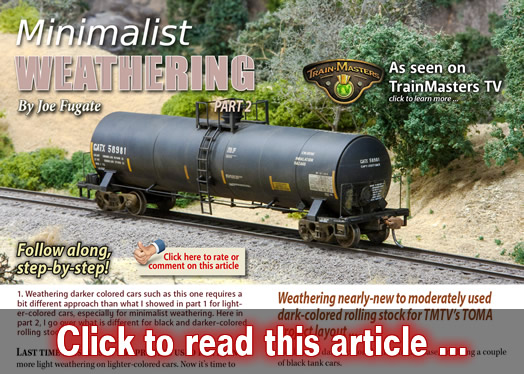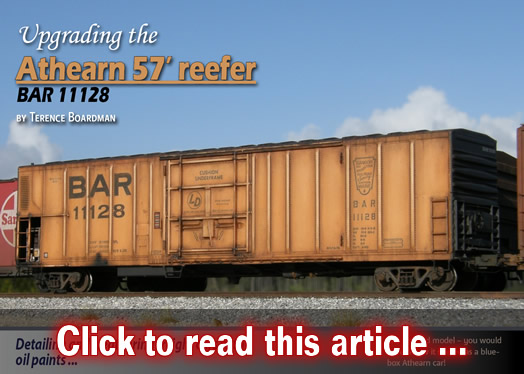Tools, tips and tricks

I can't recall any articles/videos focusing narrowly on paint touch-up techniques
I've spent many interesting and useful hours viewing videos and reading posts/articles/pdfs about painting (rolling stock and locomotives particularly) but I cannot recall ever coming across anything that focused primarily on repairing minor scratches/dings our models (particularly the ones we actually operate) can accumulate. I have a few items that could use a bit of patch work but I'm not really prepared to strip them down to the bare shell/brass unless boxed into a corner. Some of what I have was purchased painted by the factory so I have no idea what brand
How would you mask for a two color paints scheme like this?
Hi!
I’ve got a few locomotives that need to be painted so that I can post the pictures on Loco for Locos.....
Its common Vermont Railway colors, Red body and Black roof. My thought is to paint (airbrush) the red first then mask off for the black. I’m interested in any thoughts and working procedures for achieving a good crisp color demarcation like the Atlas in the picture below.

Airbrush Recommendations
Hello, all!
I'm looking for recommendations on equipment to get started with airbrushing (For weathering and eventually custom painting). I am currently looking at this starter set from Micro-Mark:
https://www.micromark.com/ULTIMATE-AIRBRUSH-OUTFIT
It looks like the various components can be had seperately from other manufacturers at lower prices though. Is this a quality set to get started with? Any recommendations for other places to start? Thanks!

A gizmo for painting wheelsets without removing them from trucks
Probably the result of staying up too late:
I had a few wheel sets to paint. Rather than remove the wheels from their trucks, I thought there might be an easy way to spin the wheelset while holding a loaded paintbrush to the wheel.
I took a practice hockey puck, and drilled a hole in its center for a press fit on the shaft of a Switchmaster stall motor switch machine. The Switchmaster was connected to a variable DC power supply. The contraption is strapped to an L-shaped bracket made from scrap plywood.

Masking putty for glazing on plastic structures?
Is there a "masking putty" made for masking off small areas on plastic models? I have quite a few built-up N-scale Kato apartment buildings with lots of small windows that I would like to spray-paint. The glazing appears glued on and doesn't seem to easily pop out (maybe they do, I was just afraid of breaking it). I suppose I could use small squares of Tamiya masking tape, but I thought someone made a malleable masking putty of some sort. Thanks!

Dry transfers instead of decals over existing paint job?
This is somewhat of a continuation question from a previous one about decal application.
For an existing, finished paint job, are you better off applying dry transfers instead of (waterslide) decals?
I ask this based on decals needing a glossy surface and that decals will be glossy and show edges when applied. I've never done dry transfers, but I figured they'd be a better application on a paint job you don't plan to touch ever again.
Thanks!
CDMV

Craftsman Kit (Oscar) Sanding Sealer for wood
So, my Oscar arrived. I remember reading about the construction of Walthers passenger cars, particularly the shaping of the ends of the roof and using sanding sealer before painting the roof to get rid of wood grain. In the (very long) past I used model airplane dope to accomplish this. That is long gone for me so I am wondering what could be used now.
My search of the internet has revealed Minwax Sanding Sealer and Zinsser primer/sealer. The Minwax stuff is soap and water cleanup but the Zinsser stuff states it is a white tinted shellac.
>> Posts index
Navigation
Journals/Blogs
Recent Blog posts:


